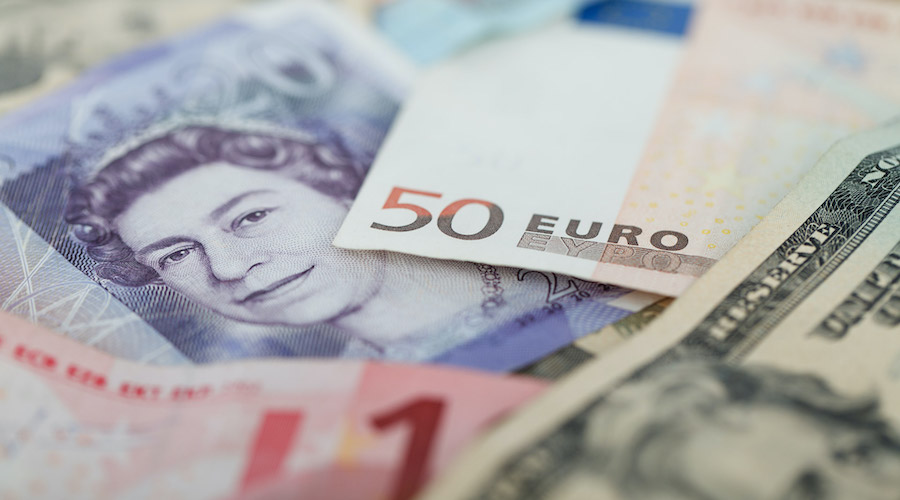“History suggests that emerging-market investors are likely to have one of their best six-to-12 month stretches in a decade from here, though it will be a very bumpy and psychologically uncomfortable ride,” said Morgan Harting, a New York-based money manager at AllianceBernstein. “We see a number of issues offering equity-like returns and extremely high yields at prices we think are well below recovery values in the event of default.”
Harting is among a growing chorus of investors turning more sanguine on emerging markets. Aviva Investors Global Services said it’s time to get selective on developing-economy bonds as it gravitates toward nations where policymakers have room for stimulus, backed by manageable debt levels and higher foreign reserves. AllianceBernstein, which manages $542 billion, favors higher-yielding bonds in developing economies.
For all the optimism, the outlook for currencies is far from assured. While the MSCI index of stocks climbed 1.5% and bonds rose 1.3% last week, currencies retreated as the U.S. dollar found fresh support. A Bloomberg study of the events that followed the global financial crisis of 2008 found investors will likely focus on value, meaning the Mexican peso and Brazilian real will lead the next stage of the recovery.
The ruble has headed the pack so far this month even as oil has tumbled, with bond investors creeping back into Russian government debt amid expectations the central bank will resume monetary easing on Friday. By contrast, the Turkish lira has been among the biggest losers. Options traders are the most bearish on the lira since September 2018, speculating that another rate cut Wednesday will send Turkey’s real interest rates further below zero.
Cut, cut, cut
- Good news for bond investors: Bank of Russia Governor Elvira Nabiullina hinted at a bigger-than-normal interest-rate cut when the central bank meets this week. Policymakers will probably reduce its benchmark rate by 50 basis points to 5.5%, according to Bloomberg Economics; “We expect the central bank to go big, as long as the ruble remains stable”
- Russia’s industrial production due Wednesday is likely to show a contraction in March
- Turkey’s central bank is set to lower its key rate by 50 basis points, according to economists’ median estimate. The benchmark rate was cut by a full percentage point to 9.75% at an emergency meeting in March, pushing its interest rates adjusted for inflation to near the world’s lowest level
- Additional data throughout the week will show the impact of the virus on consumer confidence. The lira is the worst-performing emerging-market currency this month, after the South African rand
- Ukraine will probably slash its benchmark rate by a full percentage point to 9% on Thursday amid slowing inflation and economic contraction and as it seeks aid from the International Monetary Fund
- China’s prime lending rates are forecast to decline on Monday, following last week’s reduction in the medium-term lending facility rates
Argentina and Ecuador
- Argentina unveiled a proposal to restructure foreign bonds that would push back the majority of its debt payments to the next decade. Holders of the country’s overseas debt are being offered new securities of various maturities, none of which will accrue interest before 2022. No principal would be returned before 2026
- The nation will release March trade balance figures on Wednesday
- Ecuador got overwhelming consent from bondholders to suspend coupon payments on its foreign debt until mid-August, the government said in a statement
Economic data
- Taiwan releases March export orders on Monday and industrial production on Thursday
- South Korea’s 20-day trade data will be available on Tuesday after exports contracted 18.6% during the first 10 days of April from a year ago
- That’ll be followed by first-quarter gross domestic product figures on Thursday, with growth forecast to have dipped to the weakest since the global crisis
- Thailand, whose currency is among the top performers in Asia this month, will publish March trade numbers on Tuesday
- Malaysia releases its March inflation print on Wednesday
- The nation’s bi-monthly foreign exchange reserves are also due the same day, after the stockpiles fell perilously close to the psychologically-important $100 billion level at the end of March. However, the headline figure is unlikely to break below the key mark given the downward pressure on the ringgit diminished in early April
- The Philippine remittance figures for February are still expected to show positive on-year growth. These flows, almost 10% of GDP, top the list of emerging economies with GDP greater than $100 billion
- Mexico on Friday will release February economic activity figures that are expected to show a contraction even before the pandemic’s impact in the country
- Bi-weekly inflation data on the same day could hint at more central bank easing ahead, according to Bloomberg Intelligence
- Mexico last week received a long-anticipated downgrade by Moody’s Investors Service, which lowered the nation’s sovereign debt by one notch to Baa1, with a negative outlook
- Brazil is set to release its current-account balance for March on Friday, which may show a smaller deficit than a year ago. The real is the second-worst currency in the developing world so far this year
(By Netty Ismail, Simon Flint and Sydney Maki, with assistance from Kyoungwha Kim and Alec D.B. McCabe)

Comments